Palestine Food: Basic Overview
Common Ingredients
Common Cooking Methods
Courses
Meals
Key Taste
Eating Etiquette
Meal Presentation
Culinary Festivals
Influence and Fusion
Popular Types of Palestine Food
-
Rice Dishes
Palestinian rice dishes showcase the region’s agricultural heritage and cultural richness.
They typically include rice enriched with meats, vegetables, legumes, nuts, herbs and spices.
These rice dishes are traditionally prepared through layering, simmering, steaming, and sometimes baking.
They are also central to festive occasions and family gatherings.
-
Salads
These salads highlight the use of fresh produce, primarily featuring tomatoes, cucumbers, onions, and leafy greens, often accentuated with herbs like mint and parsley.
They are typically dressed with olive oil, lemon juice, and garlic, embodying the simplicity of Mediterranean cuisine.
-
Bread and Doughs
Bread and dough-based dishes in Palestine are fundamental, often made from basic ingredients like wheat flour, water, yeast, and salt.
Traditional baking methods include using a taboon (clay oven) or saj (domed iron griddle), infusing the bread with a distinct, smoky flavor.
-
Vegetarian Dishes
These dishes normally include legumes, grains, and a wide array of vegetables like eggplants, tomatoes, and leafy greens, seasoned with an aromatic blend of herbs and spices.
Rooted in the region’s agricultural abundance and dietary traditions, they reflect a culinary culture that values freshness and nutrition.
-
Desserts
Palestinian desserts are renowned for their rich flavors and textures. Common ingredients are dates, nuts, semolina, and honey.
These sweets are typically infused with aromatic spices like cinnamon and cardamom. Some are often soaked in sweet syrups.
They are also ideal treats to celebrate hospitality and festivity.
Palestinian dishes are renowned dishes enjoyed by people in Palestine and even in nearby countries like Jordan and Israel. These delicacies are the result of combining many cultural civilizations that appeared in the country during and after the Islamic era.
Additionally, the foods of Palestine are a part of a greater picture, specifically when they belong to the family of dishes of Levantine, with many regional cuisines.
In general, Ottoman cuisine, which is now represented by Turkish delicacies, and the specialities from Lebanon play an important role in the formation of Palestinian cuisine.
Galilee, West Bank, and Gaza are three distinct cuisines in Palestine, each favoring different ingredients or cooking techniques. Also, rice and wheat are prized elements used to prepare dishes along with meat.
Interestingly, the cooking styles and ingredients used in Palestine also depend on the regional climate and location. Plus, Palestine cuisine houses many dessert treats that often appear on holiday occasions.
As you read on, I’ll reveal the key aspects of traditional Palestine food, highlighting its global presence and nutritious qualities. Following that, you get the chance to uncover 20 popular recipes with all the interesting facts about them.
Don’t forget to check out several factors that influence Palestinian dishes.
20 Popular Palestinian Dishes with Filters
By exploring 20 celebrated Palestinian delicacies, you can broaden your culinary horizons and discover this underrated cuisine.
Filters such as ingredients, taste, cooking methods, dish types, and more, are available to enhance your exploration.
Don’t forget to take a quick look at the groups below to get some information about the most famous, national, traditional, and street food offerings, as well as exotic and fusion dishes.
They are national symbols in cuisine, showcasing t Palestinian hospitality and culinary pride.
Palestinian street food will surprise you with its flavorful and spicy snacks and sweet treats that have been enjoyed for generations.
The cuisine also boasts exotic dishes that incorporate special ingredients and preparation methods. For example, maftoul, a Palestinian variant of couscous.
These fusion creations might combine elements of Middle Eastern and Western cuisines, presenting a contemporary twist on age-old recipes.
Musakhan
- National
- Traditional
Musakhan is a beloved chicken dish in Palestine featuring roasted chicken combined with onions, sumac, allspice, saffron, and fried pine nuts, all laid atop taboon bread.
It’s also considered the national dish of the country. Known in Arabic as ‘muhammar’, which translates to ‘reddish’, this dish traces its roots back to the Tulkarm and Jenin regions of Palestine.
Traditionally, musakhan is consumed using one’s hands, with the chicken placed over the bread. Often accompanied by soup, musakhan is a customary meal relished during family gatherings and special events.
Maqluba
- National
- Traditional
Maqluba is one of the most sought-after dishes for many in Palestine. Its name literally means “upside-down”, which refers to how local people serve the dish. Besides Palestine, it’s also a unique dish of Syria, Lebanon, Jordan, and Iraq.
This ideal Palestinian lunch option includes rice and veggies (typically potatoes, tomatoes, cauliflower), spices, and meat such as lamb or chicken. All components are placed in a copper pot with the meat at the bottom, followed by the veggies and rice.
For serving, local Palestinians will turn the copper pot upside down to dump out all the content. A nice tip is to enjoy maqluba with a cucumber tomato salad and yogurt on the side.
Hummus
- Street Food
- Traditional
Hummus is a widely cherished chickpea-based dish. Originating from the Middle East and Mediterranean regions, the dipping dish goes back to ancient Egypt; it was first documented in the 13th century.
Integral to Palestinian cuisine and culture, hummus complements various dishes. Moreover, it stands as a symbol of Palestinian identity and resistance, particularly during the First Intifada.
Falafel
- Fusion
- National
- Street Food
- Traditional
Falafel is a widely cherished dish in Palestine, consisting of deep-fried balls or patties made of chickpeas, fava beans, or a combination of both, seasoned with various spices and herbs.
Originating from ancient Egypt, this traditional dish was embraced by Syrian and Egyptian Jews and later by early Jewish settlers in Palestine. Typically, people pair falafel in pita or flatbread and are accompanied by salads, pickled vegetables, hot sauce, and tahini-based dressings.
Also, falafel is a great stand-alone dish as a snack or feature in a meze. Plus, falafel represents Palestinian identity and culture and is a favored choice among Arab Christians during Lent.
Fattoush
- Street Food
- Traditional
Fattoush is a popular salad in Palestine, a part of the Levantine, that features toasted or fried pieces of Arabic flatbread combined with mixed greens and assorted vegetables.
The name “Fattoush” stems from the Arabic word “fatt,” which means “crush,” and the Turkic suffix “-ush,” suggesting a bread-based dish. This salad is part of the “fattat” family of dishes that ingeniously incorporate stale flatbread.
What sets fattoush apart is its tangy flavor, attributed to sumac, a spice derived from dried and ground berries, and occasionally, the addition of pomegranate molasses, lending a sweet depth to the dish.
Knafeh
- Traditional
Knafeh is a traditional Palestinian dessert, a popular treat made from semolina dough enriched with a butter filling and delicate white cheese. Its uniqueness lies in the caramelized honey syrup layer that differentiates it from other pastries.
Hailing from Nablus, the dessert is elevated when adorned with pistachios and served warm, offering a harmonious blend of richness and sweetness, softness and crunch in every bite.
Aside from Palestine, knafeh enjoys popularity in Libya, Egypt, Syria, and other Middle Eastern, Balkan, and North African nations, where it’s known by various names like Kanafeh, Kunafeh, or Konafi.
Taboon Bread
- Street Food
- Traditional
Taboon is a Palestine flatbread traditionally baked in a clay oven, also named taboon or tannur. Central to Palestinian cuisine, it’s customarily baked on a bed of hot stones and serves as the foundation for musakhan.
It’s a staple at bakeries and food stalls, frequently used to envelop shawarma and other delicacies. This national dish of Palestine, often available in the country, is served folded with a filling mixture of spinach and onion. Plus, these flatbreads are important in the communal scene of Palestinian women.
Mujadara
- Traditional
Mujaddara is a rice dish particularly popular in Palestine and throughout the Middle East. Comprising cooked lentils combined with rice or bulgur, it’s adorned with sautéed onions.
Renowned for its simplicity, mujaddara is often seasoned with spices like cumin and coriander. Palestinians typically prepare mujaddara with olive oil and onion strips, pairing it with local milk yogurt and a refreshing green salad.
Maftoul
- Traditional
Maftoul is a well-known Palestinian specialty, made of bulgur instead of durum wheat, often called “giant couscous”. Traditionally, Palestinians, particularly rural women, take pride in preparing maftoul.
The process typically involves sautéing chopped onions and peppers, which are then simmered in a flavorful broth, with warm spices added to enhance its depth and richness.
When serving this wheat-based delicacy, it’s common to pour a savory soup over roasted bone-in chicken or tender chunks of beef and lamb.
Mansaf
- National
- Traditional
Mansaf is an immensely popular delight in Palestine, with Palestinians often relishing the dish by gathering around a table, having their left hand tucked behind their backs.
Originally, mansaf was believed to be made of meat, typically lamb or camel, combined with meat broth or ghee and served with bread. However, after its rise to fame in Jordan during the 1920s, white rice became a staple ingredient.
This iconic dish layers rice with roasted lamb slices fermented in yogurt. The name “Mansaf” translates to “huge dish” or “big tray”, indicating its presence at grand gatherings, from weddings to funerals.
Shish Barak
- Traditional
Shish barak, or joshpara, is a popular dumpling prevalent in Palestine, which is a product made from unleavened wheat dough.
These dumplings are generously filled with ground meat and various condiments. Once prepared, they are boiled in water or meat broth for serving in a clear soup or a standalone dish, often accompanied by vinegar or sauce.
In Palestine, it’s traditionally cooked in yogurt and served piping hot in its flavorful sauce, making it a favored dish, especially during the chilly winter months.
Qatayef
- Fusion
- Street Food
- Traditional
Qatayef is a favorite dessert of Palestine, often resembling sweet dumplings or folded pancakes, traditionally filled with cream, nuts, cheese, or other delights. Predominantly served during Ramadan, its roots trace back to Egypt during the Fatimid dynasty.
In Palestinian culture, qatayef is typically crafted from chickpea flour and filled with akkawi cheese, crushed walnuts, or pistachios. These treats are deep-fried, baked, or enjoyed fresh, often drizzled with aromatic syrup or honey.
Both street vendors and households in Palestine and across the Middle East consider qatayef a staple during festive times.
Freekeh
- Exotic
- Traditional
Freekeh is a renowned staple in Palestinian cuisine, characterized by its green durum wheat grains that exude a unique smoky flavor. While it’s often paired with meat, the main highlight is the freekeh wheat itself.
This grain not only boasts a signature smoky and savory profile but is also packed with nutrients. To savor Freekeh in authentic Palestinian style, use the mahshi technique, which involves mixing the grains with herbs and stuffing them into aubergines and vine leaves.
While traditionally enjoyed with chicken, a vegan rendition lets freekeh shine even more, making it the centerpiece of the meal. Alternatively, Palestinians like adding elements like lamb, raisins, dried cherry plums, or nuts to introduce many flavors to the freekeh.
Makdous
- Exotic
- Traditional
Makdous is a well-received dish in Palestine. It consists of miniature, tangy eggplants filled with a flavorful mix of walnuts, red pepper, garlic, and salt, all preserved in olive oil.
Some variations of this Levantine creation also incorporate chili powder to add an extra kick of spice.
Ghraybeh
- Fusion
- Traditional
Ghraybeh is a treasured shortbread cookie in Palestine made with ground almonds. Local Palestinians enjoyed these cookies as a special childhood treat.
In addition, visitors often receive these cookies as a gift during Ramadan and Eid. Aside from the familiar round cookies, locals form different shapes, like an S, to make ghraybeh more appealing.
Ma’amoul
- Fusion
- Traditional
Ma’amoul is renowned as a delectable date-filling treat in Palestine. Basically, ma’amoul are butter cookies made from flour and filled with dried fruits such as figs, dates, walnuts, or almonds.
These Middle Eastern shortbread pastries come in various forms, from round to crescent, shaped according to the makers. Traditionally, artisans hand-decorate these cookies or craft them using ‘tabe’, specialized wooden molds.
Qizha
- Exotic
- Traditional
Qizha is a popular Palestinian black seed paste made from crushed nigella seeds. Besides the main pungent and harsh flavor, the treat has hints of sweetness and a minty, oniony aftertaste.
Also, qizha pairs well with other condiments like tahini or baked into pies and pastries. Surprisingly, the elderly in Palestine often consume a scoop of this Nablus specialty every day to avoid illness.
Mulukhiyah
- Exotic
- Traditional
Mulukhiyah is a Palestinian dish derived from the leaves of Corchorus olitorius, a plant also utilized for fiber production. Predominantly consumed in the Levant, including Palestine, it’s also a staple in various Middle Eastern and North African regions.
The Levantine preparation method distinguishes mulukhiyah from the Egyptian style. In the Levant, meat is cooked separately and then combined with garlic, water, and chicken stock cubes to create a rich broth.
The molokhia leaves are subsequently added and simmered for an additional 15 minutes. This flavorful dish is traditionally paired with white rice and complemented by a squeeze of fresh lemon.
Nabulsi
- Exotic
- Traditional
Nabulsi is a Palestinian white-brined cheese originating from the city of Nablus.
It stands as one of the most popularly consumed cheeses in the country, along with Jordan. Made from sheep’s or goat’s milk, nabulsi is distinctively flavored with mahleb and mastic.
The cheese presents as white, rectangular, and semi-hard, becoming elastic when heated. Nabulsi is usually savored fresh, fried, or as a key ingredient in knafeh, a renowned Middle Eastern dessert.
Qidreh
- Traditional
Qidreh is a Palestinian meat dish originating from Hebron, the second holiest city in the country after Jerusalem.
This favorite dish combines meat, often lamb and chicken, with chickpeas and rice. Its distinctiveness lies in its aromatic and spicy broth, enriched with spices like cumin, allspice, and turmeric.
The authentic preparation of qidreh involves using a large copper or brass pot and cooking it in a communal wood-fired oven, imparting a unique flavor to the dish.
Qidreh is especially cherished during holidays like Ramadan and Eid. Plus, people also serve qidreh alongside Arabic salad and plain yogurt.
What Are the Influences on Palestinian Dishes?
Below are seven main impacts on the specialties of Palestine.
Lastly, do these food offerings of Palestine excite your taste buds? Share your thoughts in the comment section below. Make sure to let others know about these dishes, and keep following me to explore more amazing Central Asian dishes!


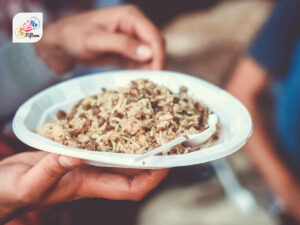
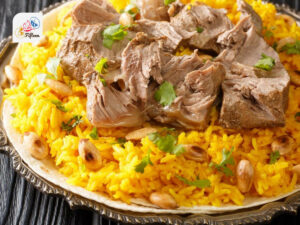
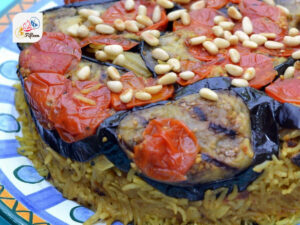
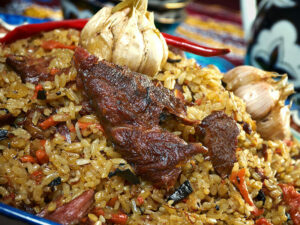
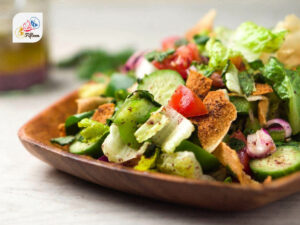
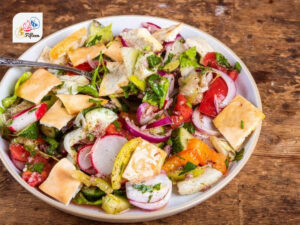
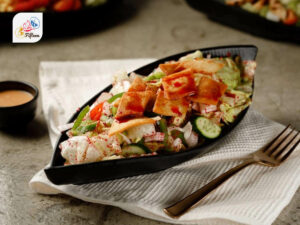
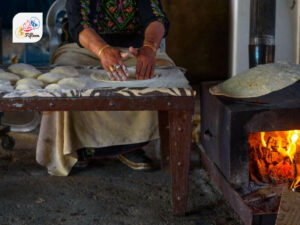
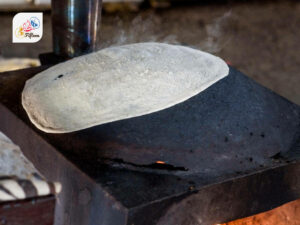
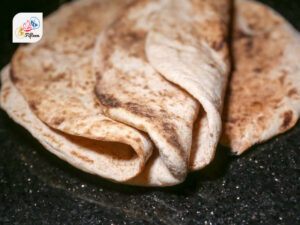
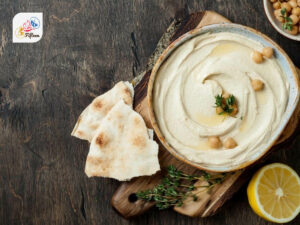
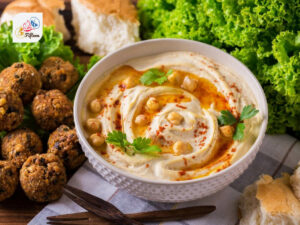
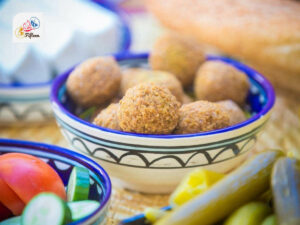
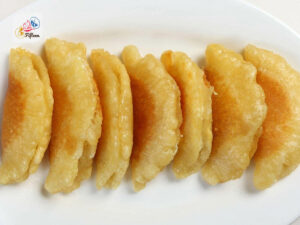
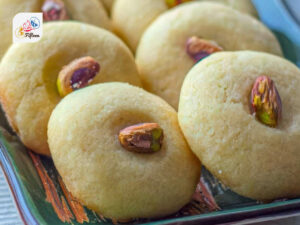
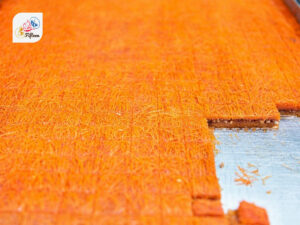
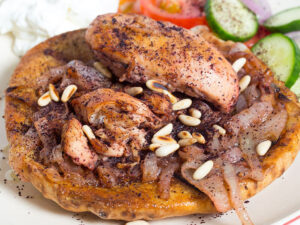
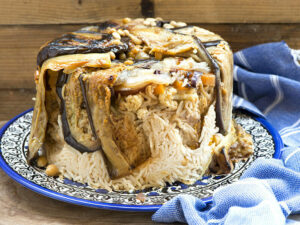
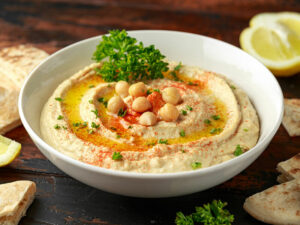
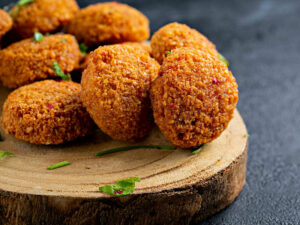
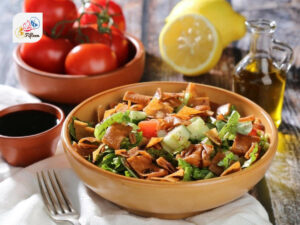
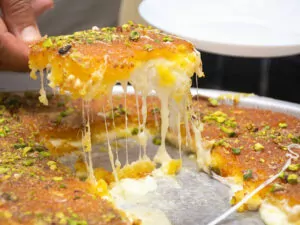
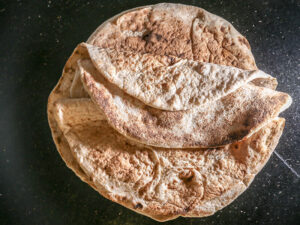
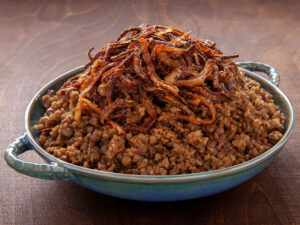
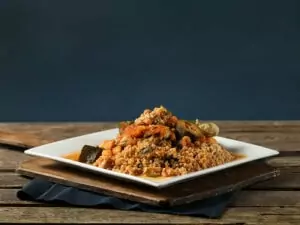
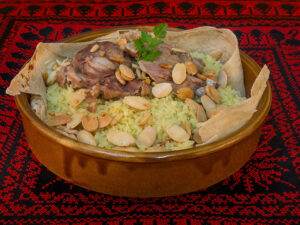
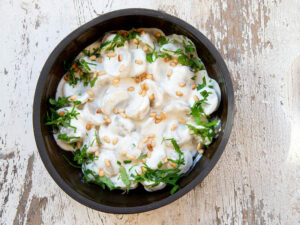

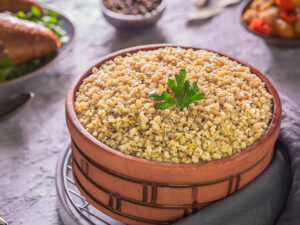
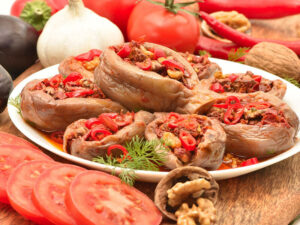
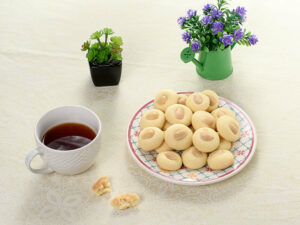
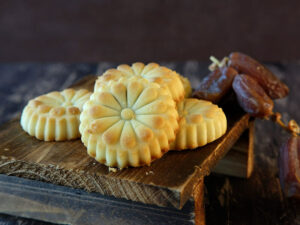
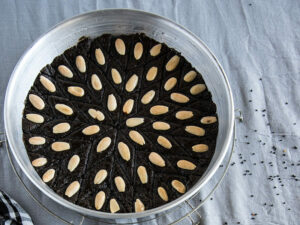
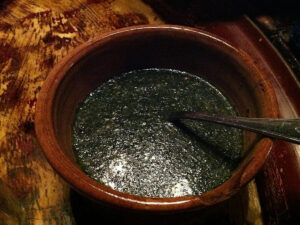
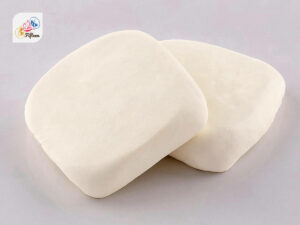
Jamie Scott
Editor in Chief, Senior Content Writer
Expertise
Home Cooking, Meal Planning, Recipe Development, Baking and Pastry, Food Editor, Cooking-video Maker, Western Food Evaluation Expert
Education
Le Cordon Bleu College of Culinary Arts
Local Community College, New York, NY
Jamie Scott is a skilled culinary expert and content creator specializing in Western cuisine. With over 15 years in the culinary field and formal training from Le Cordon Bleu, Paris, Jamie deeply understands how to blend nutrition with delicious flavors. His passion for cooking matches his commitment to making healthy eating accessible and enjoyable.
On Fifteen.net, Jamie brings a fresh perspective to classic dishes and beverages, offering readers insightful recipes, cooking tips, and a fresh view on meal planning that emphasizes taste, health, and simplicity.